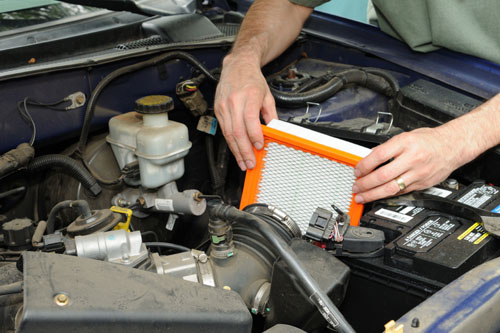What’s Included in a Tuneup?
Actually, there is no such thing as a tuneup in the traditional sense of replacing parts to bring the ignition and fuel systems up to specs for maximum performance and efficiency, and there hasn’t been for years.
About the only things left from the traditional tuneup are new spark plugs, which is typically done every 100,000 miles, and replacing the air filter periodically. The federal EPA and Department of Energy say that replacing a clogged air filter will not improve gas mileage but can improve acceleration 6% to 11%. The agencies do not say what benefit can be derived from fresh spark plugs, but computers that control today’s engines adjust the air-fuel mixture and spark timing to compensate for wear, such as when the electrodes on spark plugs are worn down.
Even so, some car owners still dutifully take their car in periodically to have it “tuned up.” Instead, service technicians will inspect and perhaps test the fuel, ignition and emissions systems to look for faulty vacuum hoses, oxygen sensors and other parts that can hurt performance. The federal government, for example, says a bad oxygen sensor can give engine computers false readings and reduce fuel economy as much as 40%.
Having your vehicle serviced and inspected periodically is a good way to extend its life and keep it operating efficiently. However, walking into a repair facility and asking for a tuneup is a bad idea because it indicates you’re still living in the previous century and have extra money you would like to spend. Some in the auto-repair business will take advantage of those opportunities.
Look in the owner’s manual for your vehicle (or separate maintenance schedule) to find what the manufacturer recommends, and see if you can even find the words “tuneup.” For example, we looked at the maintenance guide for the Ford Fiesta that also applies to other Ford vehicles. The first mention of anything related to a traditional tune-up was to replace the engine air filter every 30,000 miles. The only other related item was to replace the spark plugs every 100,000 miles.
Source: Cars.com



